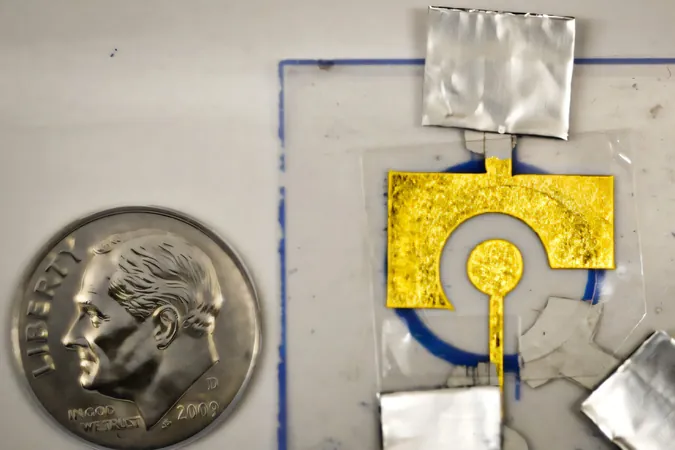
UAH Electric Propulsion Club Aims for Patent on Innovative Ion Thruster, STARGATE
2025-01-05
Author: Wei Ling
Introduction
The Electric Propulsion Club (EPC) at The University of Alabama in Huntsville (UAH) has set its sights on revolutionizing satellite propulsion technology. Recently, the club showcased its cutting-edge project, STARGATE, an experimental gridded ion thruster, at the prestigious 75th International Astronautical Congress (IAC) in Milan, Italy. This gathering drew over 11,000 attendees from more than 120 countries, including leaders from 60 national space agencies, marking a significant event in the global aerospace calendar.
About the STARGATE Project
Comprising all UAH undergraduate members, the STARGATE team is an independent student research organization focused on electric propulsion and plasma physics. The global surge in small satellites, particularly in low Earth orbit, has increased the demand for efficient, small-scale electric propulsion systems that can perform crucial operations such as collision avoidance, orbit modification, and autonomous station keeping.
Innovation in Ion Thruster Technology
Claude Blue, a junior in aerospace engineering and the research lead, explained the innovative approach behind STARGATE: "We are developing a new type of gridded ion thruster for small satellite propulsion that uses the corona discharge reaction for plasma production, rather than conventional methods." The team is currently in the process of patenting this groundbreaking technology through UAH's Office of Technology Commercialization.
How It Works
An ion thruster works by ionizing a neutral gas to produce charged ions, which are then accelerated to generate thrust. The STARGATE's unique method employs high-voltage grid electrodes to accelerate ions, leveraging a corona discharge between two electrodes to create a plasma. This innovative approach promises to enhance the capabilities of satellite systems significantly.
Networking at IAC
During the IAC, the UAH EPC team not only presented their work but also took advantage of the networking opportunities available at the event. Blue noted that they made invaluable connections and explored potential partnerships aimed at further advancing their technology.
Sponsorship and Support
The journey to Italy was made possible for the STARGATE team after winning the 2023 Von Braun Symposium Student Poster Contest, which led to sponsorship from the American Astronautical Society. The team's faculty advisor, Dr. Themistoklis Chronis, a clinical assistant professor of physics and astronomy, played an essential role in guiding the students throughout their research.
Collaboration and Future Insights
Blue emphasized the importance of collaborative efforts: "It’s inspiring to see how everyone is coming together to build the future. We gained insights into industry trends and technological advancements that will influence future phases of our project." The team observed groundbreaking innovations in space technology, such as VAST Space’s HAVEN 2 concept and the AXIOM PRADA space suit, which they plan to leverage in their ongoing work.
Conclusion
The UAH EPC's development of the STARGATE ion thruster not only highlights the ingenuity of young scientists but also positions them at the forefront of the burgeoning space economy. As small satellite technology continues to expand, the potential for this innovative propulsion system could redefine how we explore and utilize space.


 Brasil (PT)
Brasil (PT)
 Canada (EN)
Canada (EN)
 Chile (ES)
Chile (ES)
 Česko (CS)
Česko (CS)
 대한민국 (KO)
대한민국 (KO)
 España (ES)
España (ES)
 France (FR)
France (FR)
 Hong Kong (EN)
Hong Kong (EN)
 Italia (IT)
Italia (IT)
 日本 (JA)
日本 (JA)
 Magyarország (HU)
Magyarország (HU)
 Norge (NO)
Norge (NO)
 Polska (PL)
Polska (PL)
 Schweiz (DE)
Schweiz (DE)
 Singapore (EN)
Singapore (EN)
 Sverige (SV)
Sverige (SV)
 Suomi (FI)
Suomi (FI)
 Türkiye (TR)
Türkiye (TR)
 الإمارات العربية المتحدة (AR)
الإمارات العربية المتحدة (AR)